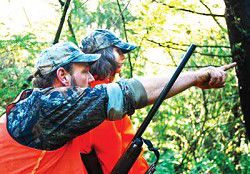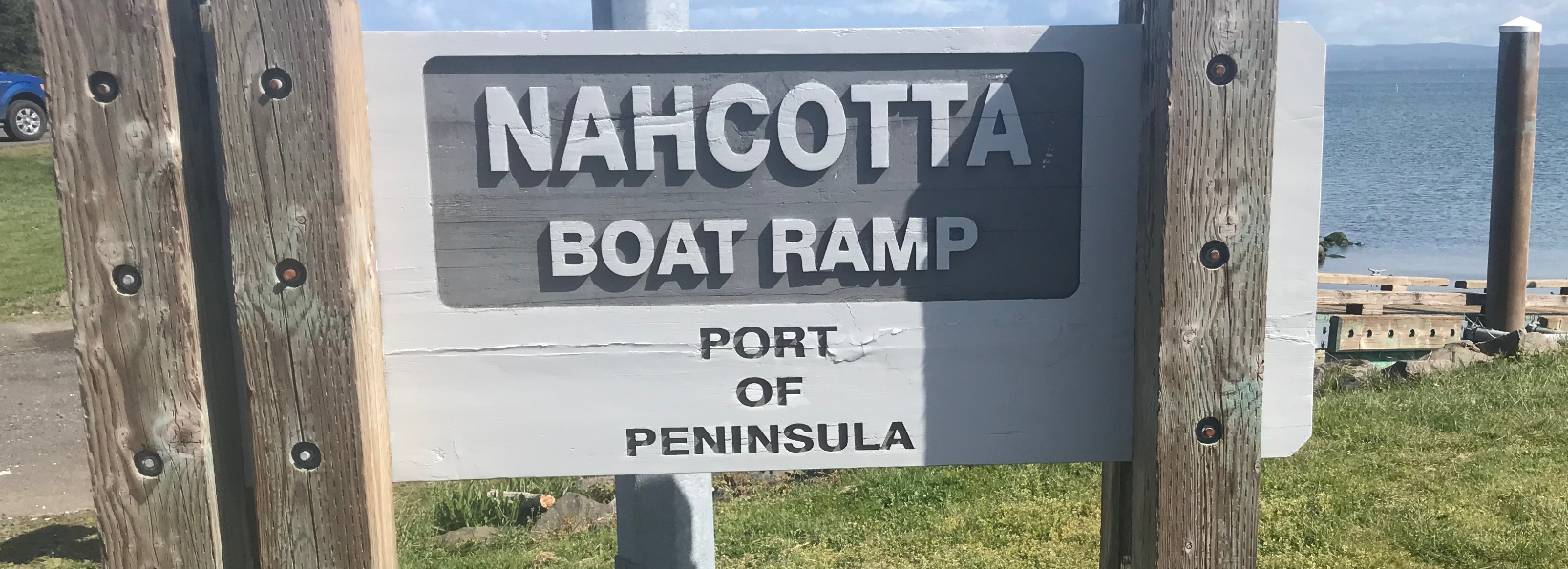Dad & daughter begin new tradition
Published 4:00 pm Monday, November 2, 2009

- While hiking through the trail that he and his family have historically had success on, Matzen gives tips and advice to his daughter.
CHINOOK – Jerry Matzen, internationally known fish decoy carver and owner of the Crow’s Nest, an Ocean Park shop of eclectic collectables and folk art, is also an accomplished hunter.
“Hunting runs through the family,” says Isobella, his 13-year-old daughter, who has just purchased her first deer license after passing the gun safety course taught by LBPD Chief Flint Wright earlier this year.
We have just dined on delicious cube steak from an 800-pound doe elk that Jerry brought down with one arrow on the first day of bow hunting in September, and, Isobella’s favorite, a spicy Italian bear sausage-meat from an earlier hunt.
“Yes, it’s sad to kill an animal,” says Jerry as we look over photos of the beautiful doe being field-dressed in a Bear River meadow, “But she is feeding my family and the families of my two hunting partners this winter.”
“I love these animals,” he adds. “I love to watch them.”
All in the Family Of Isobella’s hunting aspirations, Jerry says, “It surprised me that she wanted to hunt.”
“I didn’t push her. You have to make up your own mind about it because of the killing.”
Isobella brings out the guns she carried to pass her gun safety course.
“This is a 20 gauge shotgun,” she says, “and this is a .270 bolt-action rifle that belonged to my mother, Crystal.”
Isobella explains that the higher the gauge, the smaller the bullet. She describes the difference between a rifle and a shotgun. This is a gal comfortable with hunting terms and equipment.
“We set up an obstacle course in the living room so I could practice carrying the guns,” she shares.
Isaobella got the idea of hunting from her family – Jerry’s father is a hunter too – and practiced with video games early on. Finally she announced that she wanted to take the gun safety course, a requirement to get a deer tag.
“There are a few boys in my grade who like to hunt,” she says, “but no girls.”
Isobella, a seventh grader at Ilwaco Middle School, and her dad share their idyllic lake-side home with five cats, two dogs and a pot-bellied pig. She plays flute in the marching band and likes to write.
“I’m getting all A’s in my English class,” she says.
“No Matzen has ever gotten an A in English before,” Jerry adds.
Bear Valley Recently father and daughter rode over to Bear Valley. They scanned for game from a patch of clear-cut and walked a mile and a half into the timber looking for Isobella’s first deer.
“Hunting is like fishing,” says Jerry, “we like to keep our spots to ourselves.”
“I like to walk in the timber,” says Isobella. “It’s my favorite place – it’s dark and it looks like a place you’d see a deer.”
Isobella goes on, “It was really nice and quiet, too nice.”
Jerry says when the woods are quiet, the animals are quiet too – they’re not out walking around so it’s more difficult to see them and to hunt them.
Earlier in the season, sometimes the Matzens would get up in the morning for a hunt before Isobella went to school.
“We’d stop by the gas station for dad’s coffee and I’d get something for breakfast,” she says.
She hasn’t killed her first deer yet – the regular deer season ended at the end of October – but Isobelle has a “late buck tag” and they will try again on the first Thursday after the next elk season ends in November.
“By then the bucks should be up and walking around,” says Jerry.
Still Hunting Jerry enjoys bow hunting because it is an intensive “boots on the ground” affair. He calls his method “still hunting” and it requires the wily old-fashioned skills of a hunter – cunning, knowledge of tracking, understanding of the quarry, and a close reading of signs and the terrain.
Even with the high-tech equipment of a modern-day bow hunter – a Fred Bear solo-cam bow and 340, 10.2 GPI carbon broadhead (the arrow type) – a bow hunter must stalk his game to within 25 to 40 yards to get a clear shot.
Jerry is blessed with long, strong arms, so he pulls 72 pounds and has a 32-inch draw, which sends his arrow toward its target at about 290 feet per second.
He describes his hunting technique like this.
“First I look at the conditions and try to figure out what the animals might be doing on my hunting day,” he explains. “Then I pick out a piece of woods that I think will have the game I’m after.”
“You always enter with your nose into the wind.”
“Then I stop and just get to where I want to go as quietly as I can,” he says. “Sometimes it takes me an hour to go 100 yards.”
“And when I see an animal, then I slow way down.”
“If I break a branch, that’s when I use a call, so the other animals will think I’m a deer and forget about me.”
“To get bow-close, you have to be sneaky,” he adds.
Know Your Doe For Jerry’s style of hunting, knowledge of the animals – whether deer, elk or bear – is essential. He points out a three-point elk with the arrow he used to bag it resting across its antlers.
“This one I watched for a couple years,” he says.
Bull elk have a fairly small territory and mark their terrain with “scrapings,” places where they paw in the dirt and urinate. When Jerry sees a scraping, he knows he is on to something because bucks will mate with several does within this marked territory.
“A buck in rut is a little bit crazy, so they’re easier to hunt,” he says.
This year, the season was opened for doe elk-something that hasn’t happened since the late ’90s. Jerry went out on the first day and shot his large doe around 11 a.m.
When he sees that his shot is good, he has a specific process for proceeding.
“Once my shot is off, I sit right where I am and wait,” he says. “After an hour or so, I set a flag where I am and look for my arrow.”
“You need to find the arrow – that’s the most important thing – because that arrow will tell you everything.”
Matzen pulls out a range of arrows from past hunts and spreads them on the table. Some arrows are bent at odd angles or show a bloodied shaft or fletch (one of the three feathers at the end of the arrow’s shaft).
A bad bow hunting day is when your shot is not true and you have to track a wounded animal through the brush for hours, looking for broken twigs, pieces of fur, or spots of blood.
The arrow that killed his doe elk is snapped off about two thirds of the way up the shaft (it is made of layered carbon and amazingly strong) and two of the three razor-sharp blades on the arrow point are nicked and gouged.
“She may have pulled her shoulder just as it entered,” he guesses.
But although the arrow is broken, this doe was shot through and had a ‘”wound channel” of each side of her body – a perfect hit.
“With a clean shot like this one, an animal hemorrhages to death,” Jerry says. “We tracked her for 30 minutes and found her about 120 yards from where I shot her.”
“She probably died within five minutes,” he adds.
Field Dressing Jerry hunts with a couple of friends. Once an animal is shot, the team is in tracking mode. When the animal is downed and found, they begin the field dressing.
“We have a kit,” says Matzen, “with a couple big sheath knives and a large meat cleaver honed to razor-sharpness.”
“This doe fell out in the meadow, so we brought her into the shade and opened her up to cool her down,” he continues. “Dressing the meat is an important step that has to be done right.”
They dressed and quartered the doe and packed her out about half a mile; each quarter probably weighed over 125 pounds.
“Sometimes my buddies and I say, ‘Dudes, what are we doing?’ This is hard work,” he says laughing.
“But elk meat is delicious – that’s why we’re out here. It’s as good as it gets.”
“I have a problem grabbing a burger and knowing that it’s meat from a hundred different animals,” says Jerry.
One of Jerry’s friends has a meat grinder, so most of the elk meat ends up as cube steak and is lovingly floured and browned in a fry pan with plenty of butter.





